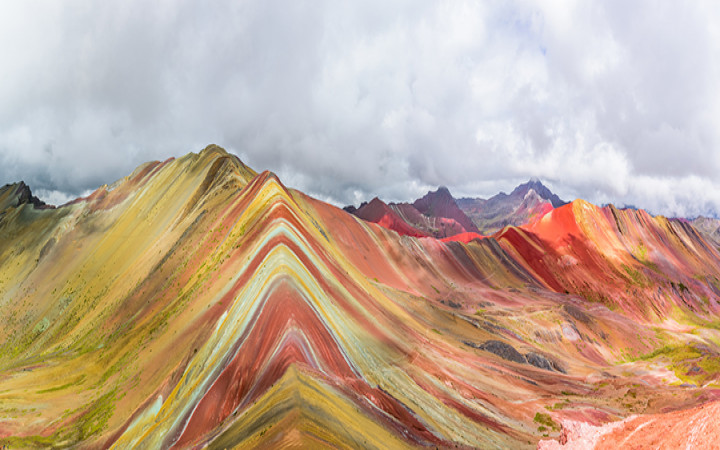Today’s Wonder of the Day was inspired by Carson. Carson Wonders, “What is Geology?” Thanks for WONDERing with us, Carson!
Have you ever climbed a mountain? Maybe you’re lucky enough to live near the Rocky Mountains or in Appalachia. Or perhaps you’ve trekked the Appalachian Trail or the Pacific Crest Trail. If so, you’ve been up and down multiple mountains.
What would you expect to find at the top of a tall mountain? If you’ve ever seen pictures of the top of Mt. Everest, you know mountaintops can be cold, lonely places. You may see nothing more than cold, gray rock covered in ice and snow. Sometimes, though, nature can surprise you. What if you reached the top of a mountain and looked down upon all the colors of the rainbow?
That’s the very sight that draws thousands of people to Peru every year. They travel a little over 60 miles southeast of the city of Cusco. There, they find Ausangate Mountain deep in the Peruvian Andes.
Ausangate is known around the world as Rainbow Mountain. Locally, it’s called Vinicunca. The steep slopes and ridges of this area are striped with beautiful colors. Looking out on the landscape, you can see gold, maroon, green, lavender, and turquoise. It’s one of the world’s great geological marvels. The area is also a holy site for local indigenous peoples.
In the past, Rainbow Mountain could only be reached by hiking for several days. Today, however, you can hire a tour guide in Cusco for about $30. On tours, passengers travel by bus to the Rainbow Mountain trailhead. Then, they hike to the top of Rainbow Mountain. The trip to the peak can be quite difficult and last several hours. After all, the mountain is 17,000 feet in elevation!
What gives Rainbow Mountain its beautiful colors? Layers of sediment with unique mineral content have eroded over time. This gives the mountain its many colors. For example, red tones likely come from iron oxide. Other colors also come from minerals. These include goethite and oxidized limonite (brown), iron sulphide (yellow), chlorite (green), etc.
Are you ready to head to Peru? In addition to the terrain and elevation challenges during your trip, there's always potential for bad weather. You could face blazing sunlight and frigid winds on the trip. Still, the trek can be gorgeous. It passes stone villages, mountain streams, and herds of llamas and alpacas.
Some worry that the area is being damaged by too much tourism. It’s always important to respect nature when hiking—be sure to leave no trace. As long as you do so, hiking to Rainbow Mountain can be an experience like no other!
Standards: CCRA.L.3, CCRA.L.6, CCRA.R.1, CCRA.R.2, CCRA.R.4, CCRA.R.10, CCRA.SL.1, CCRA.W.2, CCRA.W.4, CCRA.W.6, CCRA.W.9, CCRA.L.1, CCRA.L.2, C3.D2.Geo.2




